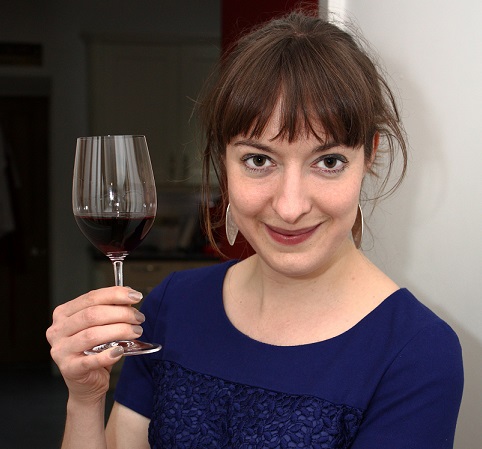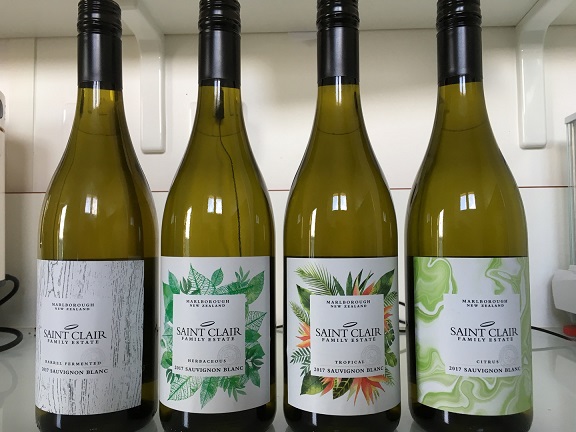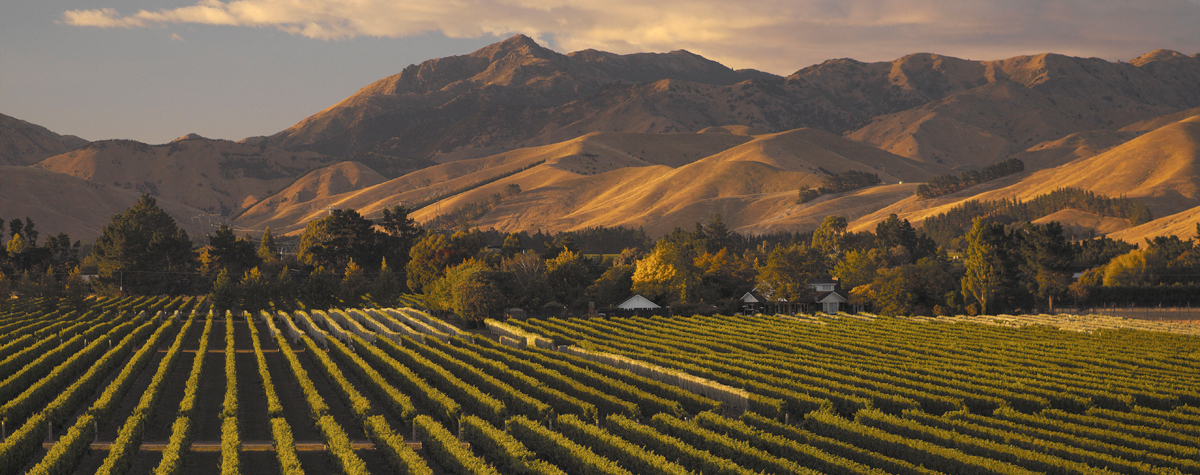
Heather Stewart (above), the winemaker in charge of white wines at Marlborough’s Saint Clair Family Estate, used her knowledge of the sites to select four parcels that would give her the best raw materials to make wines with these distinctive characteristics: tropical, citrus, herbaceous and barrel fermented. These characteristics were then enhanced by different winemaking protocols, including the use of specific yeasts, inactivated yeasts and yeast nutrients.
The key purpose of this was to “harness the individual potential of different sites within the broader Marlborough region”, according to MW student and UK wine buyer Sarah Benson, who carried out the research for yeast company Lallemand Oenology with supervision from consultants Sam Harrop MW and Dirceu Vianna Junior MW.
The resulting wines, from the “challenging” 2017 vintage, were then used in a study to determine the preferred style by nearly 250 consumers and 24 journalists in the UK.
The aspects we're going to focus on here are the role that microbiological tools have in optimising site-specific wines and how to achieve the style that consumers prefer.
Bringing out the very best expressionAt the results presentation in London this month, Sarah (below) denied this approach was “winemaking by numbers”. She said: “This is about how we can work with the winemaking and look at the tools we have to optimise the sites that we are working with to bring out the very best expression and reflect those individual sites.”

Making four distinctive Marlborough Sauvignon Blancs
Tropical style
Commercial levels of grapes were picked for this study. For the tropical style of Sauvignon Blanc, 78.53 tonnes of were machine-harvested from Dillons Point in the Lower Wairau, a low-lying vineyard close to the sea in a sub-region known for making high-thiol Sauvignons. Juice yield after pressing was 787 litres per tonne.The free-run juice
Brix: 18.9
pH: 3.15
TA: 10.7 g/L
YAN: 251 mg/L
Winemaking
• Juice was chaptalized at 2% 12 days after harvest.
• IOC BE Thiols yeast added at 200 ppm. This helps promote the polyfunctional thiols 3-mercaptohexanol (3MH), which, along with 3-mercaptohexanol acetate (3MHA), contribute passionfruit and grapefruit aromas to the wine.
• GoFerm Protect Evolution rehydration nutrient added at 250ppm to encourage aromatic precursor assimilation.
• Optimum White at 200ppm. This acts as an antioxidant to protect aromatic compounds.
• Stimula Sauvignon Blanc at 400ppm. This is an amino-acid-containing nitrogen nutrient optimising the production of volatile thiols.
• Fermaid O at 400mg/L initially and then a third of the way through fermentation at 200mg/L. This is a nitrogen-rich inactivated yeast.
• Pure-lees Longevity was also added at 200ppm. This is an inactivated yeast with high dissolved oxygen uptake – so less sulphur is required in the finished wine.
The wine
Alcohol: 12.85%
Residual sugar: 0.6g/L
pH: 3.17
TA: 8.6g/L
Free SO2: 36mg/L
Total SO2: 118mg/L
Herbaceous style
For this style, 36.85 tonnes of Sauvignon Blanc was machine-harvested from another vineyard in Dillons Point, about 3km from the parcel selected for the tropical-style wine. It’s a vineyard that consistently produces a very green expression of Sauvignon Blanc, with characteristics of green pepper and cucumber. This is probably due to the 2m-high canopy, which creates some shading of neighbouring rows.Juice yield was 781 litres per tonne.
Interestingly, the green herbaceous character isn’t due to lower ripeness levels as these grapes had a higher Brix reading at picking.
The free-run juice
Brix: 20.4
pH: 3.17
TA: 10.7 g/L
YAN: 300 mg/L
Winemaking
• Juice was chaptalized by 3.2%.
• Lalvin R2 yeast at 200ppm. This Saccharomyces cerevisiae bayanus yeast promotes terpenes, higher alcohols and esters.
• GoFerm Protect Evolution at 250ppm. This is a rehydration nutrient.
• Optimum White at 200ppm.
• Fermaid O at 200ppm added at the beginning of fermentation, followed by DAP addition during fermentation at 12.2° Brix.
• After racking and SO2 addition, Pure-Lees Longevity was added at 200ppm.
Herbaceous style Sauvignon Blanc
The wine
Alcohol: 12.85%
Residual sugar: 0.6 g/L
pH: 3.17
TA: 8.6g/L
Free SO2: 36mg/L
Total SO2: 118mg/L
Citrus style
For this style, 135.97 tonnes of Sauvignon Blanc was machine-harvested from the Guernsey Road Vineyard with a juice extraction rate of 780 tonnes/litre. This vineyard is at the beginning of the Waihopai Valley, on the first of the river terraces right next to the Waihopai River.It is a low-fertility site and produces wines with lower thiol levels. YANs are relatively low, too.
The free-run juice
Brix: 19.5
pH: 3.05
TA: 9.8g/L
YAN: 134mg/L
Winemaking
• Chaptalized at 2% 12 days after harvest.
• Cross Evolution yeast (which is more commonly used for Pinot Blanc and Chardonnay) at 200 ppm. Saccharomyces cerevisiae var. cerevisiae for mouthfeel, aromatic intensity, fresh fruit and floral notes.
• GoFerm Protect Evolution rehydration nutrient at 250ppm.
• Optimum White at 200 ppm.
• Fermaid O added at 400mg/L initially and then a third of the way through fermentation at 200mg/L.
• Pure-Lees Longevity at 200 ppm
Citrus style Sauvignon Blanc
The wine
Alcohol: 12.85%
Residual sugar: 0.6g/L
pH: 3.17
TA: 8.6g/L
Free SO2: 36mg/L
Total SO2: 118mg/L
Barrel fermented
Saint Clair has made a barrel-fermented Sauvignon Blanc, named Barrique, since 2013. The winery’s experience is that ideally the fruit needs to be expressive and robust with intensity of flavour, but it can’t be too green or too tropical.The grapes came from a vineyard next to the Wairau River, in the Dillons Point sub-region, so they had good expression and intensity, with lots of thiol, but also a nice mineral thread.
The grapes for this wine were hung a week or so longer than the rest of the vineyard to get extra ripeness, and it was the very last fruit to come in for the 2017 vintage. As the goal was not to overdo the thiols and to whole-bunch press this fruit, the grapes were hand-harvested (which also contributes to lower thiol levels).
The free-run juice
Brix: 19.7
pH: 3.11
TA: 10.7g/L
YAN: 326mg/L
Winemaking
• Whole-bunch press, with press cut at 600 litres/tonne.
• Some SO2 added and light settling.
• Racked, warmed, inoculated with Lalvin CY3079 yeast at 200ppm
• GoFerm Protect Evolution rehydration nutrient at 250ppm.
• Chaptalized (37.7g/L).
• Transfer to two seasoned French puncheons and five seasoned French barriques.
• Barrel ferment and leave on lees.
• Optimum White added at 200ppm.
• Fermaid O at 200ppm added at the beginning of fermentation.
The wine
Alcohol: 12.79%
Residual sugar: 2.4g/L
pH: 3.16
TA: 9.3g/L
Free SO2: 11mg/L
Total SO2: 121mg/L

Results regarding aromas
- New Zealand Sauvignon may be known for its more overt, pungent style, but this study shows it was not the most aromatically intense wine that was favoured by the tasters.
- The more restrained citrus wine, which showed relatively low levels of 3MH and 3MHA, was the aromatic preference for both consumers and journalists.
- Neither the herbaceous nor tropical wines with higher levels of 3MH and 3MHA scored as well with the consumer group, suggesting a move in consumer preference for a more restrained style.
- The citrus wine had the highest level of 4MMP (50 ng/l), C13-norisoprenoid (2.05 μg/L), ethyl octanoate (1506 μg/L; reflected in the ‘pineapple’ picked out by the consumers and journalists) and ethyl hexanoate of the four wines. It showed the most complex range of esters with good concentrations of the main esters giving complexity which could have contributed to its rating.
- The citrus style was the preferred style aromatically for consumers typically spending below £6, between £6 and £7.50, and between £9.50 and £11.50 but those who typically spent £9.50-£11.50 preferred the tropical style and those spending over £11.50 the barrel-fermented style.
- The journalists ranked the barrel-fermented style higher than the consumer group.
- Male consumers had a greater preference for the barrel-fermented style than women did.
- The barrel-fermented style was more favoured by those between the ages of 31 and 40 and over the age of 50.
- Consumers detected the same aromas as the professionals.
- Consumers more frequently use adjectives – such as fruity, subtle, sweet, fresh – as aromatic attributes rather than nouns.
Results regarding flavours
- The tropical wine was the consumer favourite on flavour, just pipping citrus – with a mean score of 6.42 for the tropical and 6.35 for the citrus. The journalists scored citrus top with a mean of 6.35 and the tropical second with 6.27.
- The barrel-fermented wine was the least favourite of both groups.
- There was no significant difference in preference when it came to mouthfeel.
Overall results
With all factors considered, the citrus wine was preferred by journalists, while the consumers liked the tropical wine equally. The journalists’ least favourite wine was tropical, while the consumers’ was the barrel.
Conclusion
The results suggest that segmenting the market by preference groups and then targeting them with wines made in specific styles could be an effective strategy for wineries.Using a microbiological toolbox, it’s possible to maximize site potential and to make wines that better reflect their sense of place. This means it is also possible to make wines that specific consumer groups prefer.
Sarah Benson says this approach could give wineries “a competitive edge”.













.png)






